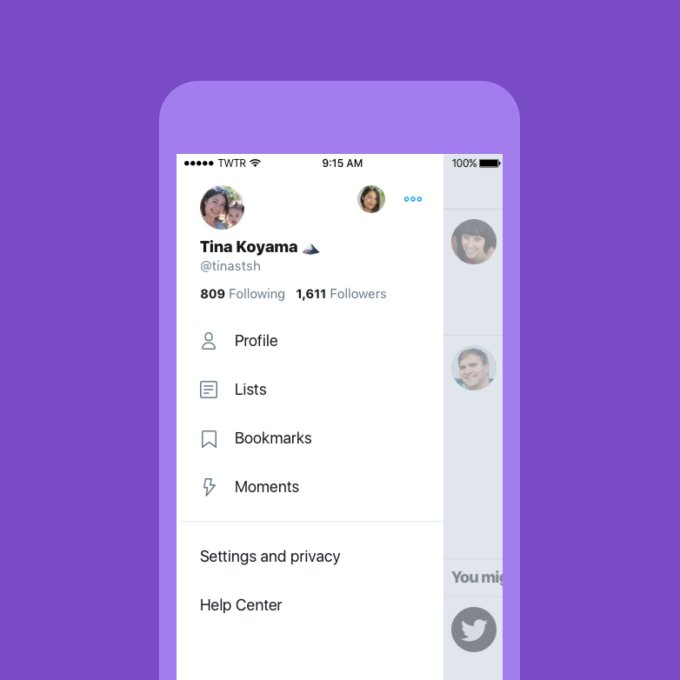Last month, Twitter started work on a new “save for later” feature for Tweets in your timeline that you wanted to flag to refer back to in the future. Now it’s given the feature a name — it will be called Bookmarks — and is running tests with it.
The news was made public last night in a series of Tweets from Tina Koyama, a staff product designer at the company, who said that the company has picked out different versions of how Bookmarks will look and work and will now test them in the Twitter community.
Twitter declined to comment beyond the Tweets. “We’ll be sure to let you know if/when we have more details to share in terms of a formal announcement!” the spokesperson added.
Judging by what Twitter has been showing off so far, the bookmarking tool might appear in a menu in the bottom right corner of a Tweet on mobile, or in the v-drop-down menu in the upper-right corner on desktop. It will live alongside other further actions like sending a Tweet in a direct message to someone or creating a Moment (Twitter’s name for when you string together a series of existing Tweets around a subject).
If you have an eye for blurry detail, you may be able to make out more of the flow here:

Bookmarks that have been saved can then be accessed via your profile page, where you also access any Lists and Moments.

(Get in touch if you find you are a part of that test, and let us know if you’re seeing something else.)
Today, you can already use Twitter’s Heart as a way of notating Tweets that you might like to return to read again later.
But, actually, the main function of the heart is to notify the sender of the Tweet (and anyone else reading it) that you liked it. So the Bookmark will be useful in cases where you may want to keep that information to yourself.
“You told us that you want Tweets you’ve bookmarked to be private, so only you can see it,” Koyama writes. “We kept this in mind while creating designs for the feature.” While the Bookmarks will be saved privately, Twitter will give you the option for sharing them in a Tweet later, if you so choose.
And as we’ve mentioned before, there a number of other ways of saving Tweets for later reference, including sending yourself direct messages, retweeting so that they live in your profile’s timeline, opening them in other tabs, saving them to a note-taking app, using Instapaper and more.
But all of these are more steps, less private, and will never be as easy as simply hitting a button within the Tweet itself.
Having a bookmarking tool in Twitter is a useful feature, especially considering that timelines can move quickly. Short (or not so short) Tweets are often vessels for links, which you may not otherwise be able to track and remember.
Twitter, like a lot of other social media, is seen by many as a distraction, but this could be one little way to at least make it a little more productive. It’s also, in a way, table stakes for a social site: both Facebook and Pinterest let you save links and posts on its platform, and have done for a couple of years now.
Bookmarks comes at a time when Twitter has been working on a series of changes to help the basic platform expand beyond the limitations that were baked into it from the start.
They include two features aimed to trying to make it easier to fit more words (and more pontifications, jokes, stories and so on) into your Tweeting life. Twitter has doubled the number of characters that you can have in a tweet to 280 from 140, and it’s now running tests to let people create “tweetstorms” to string together several of their own Tweets into a thread.
At a time when the company is still grappling with how best to moderate the kind of content pushed through its platform — Twitter’s cheer for free speech abused with harassment, fake news passed as facts, among other problems — features like Bookmarks are aiming at another challenge: promoting more growth and engagement among its users.
(The two challenges actually go hand-in-hand, in my opinion. If you don’t nail the content problem, it won’t matter if Twitter is easier to use because it will devolve into a cesspool. If you don’t nail the user experience problem, it will limit the way not just bad but also good content will get consumed.)
As of last quarter, the company had 330 million monthly active users. That is up about four percent on a year ago but comes amid many quarters of flat or even declining growth. Adding in more features like Bookmarks will make Twitter more useful, and potentially more used — hopefully without bloating it too much in the process.































Comment